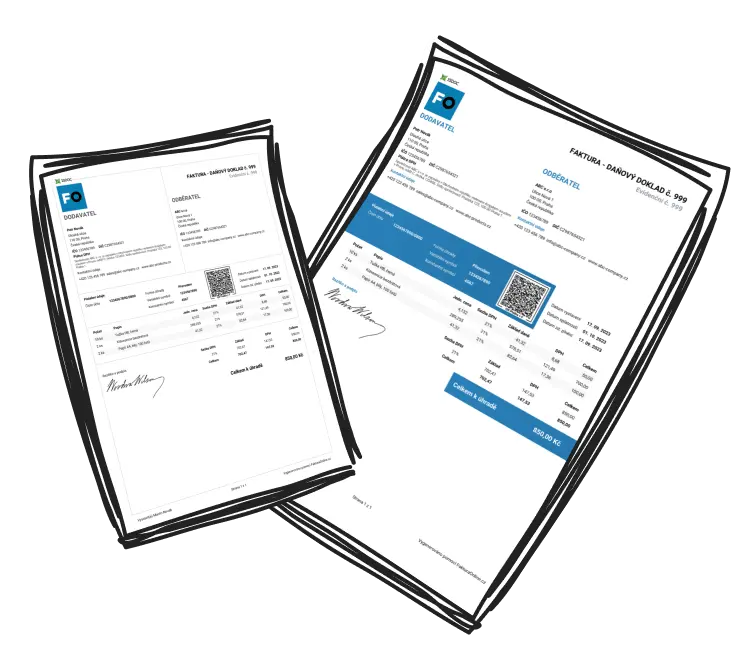An unclear invoice can cause bewilderment and payment hold-ups—avoid this pitfall by crafting your invoices with precision. Follow these uncomplicated steps:
Designate as an Invoice: Label the document clearly with "Invoice" so its intent isn't misconstrued.
Assign a Distinct Invoice Number: Use a unique identifier for each invoice to simplify tracking and referencing.
Detail Parties' Contacts: Include full contact information and logos for both your business and the recipient, ensuring a professional appearance.
Offer a Detailed Breakdown: Specify provided goods or services, along with descriptions, amounts, rates, and totals per item, to eradicate confusion.
Define Payment Terms: Clearly state when and how payments should be made (options like bank transfer or PayPal), as well as terms like charges for late payments.
Emphasise the Total Due: Present the total payable in numbers and words to prevent misunderstanding.
Producing invoices with these aspects helps ensure professionalism, making it simple for your clients in Britain to settle their payments punctually.
Key Elements of a Comprehensive Invoice
A missing detail in an invoice can be as worrying as a blank cheque. Important components you must feature are:
Invoice Number: Use a unique, easy-to-trace number.
Information on Both Parties: Include detailed contacts for both buyer and seller, with names, addresses, and tax IDs where applicable.
Comprehensive Itemised List: Provide detailed descriptions, quantities, rates, taxes, and subtotals.
Terms of Payment: Clearly express the due date, acceptable payment methods, and any late payment penalties.
The Total Amount Due: Ensure clarity by incorporating taxes in the final total.
Date of Issue: Record the issue date for precise book-keeping and deadline assessment.
Dire Payment Instructions: Include account details or digital payment pathways for ease of payment.
Highlighting vital points like the payment due date ensures the invoice captures attention and speeds up the disbursement process.
Ensuring Swift Payment of Invoices
Rapid receipt of payments enhances cash flow and cements robust business relationships. Consider these proven strategies:
Send Invoices Promptly: Dispatch the invoice immediately after service or product delivery.
Utilise Automation Tools: Use software like Xero or QuickBooks to automate client reminders and maintain timeliness.
Offer Diverse Payment Options: Make payments easier with alternatives such as bank transfers, card payments, or platforms like PayPal.
Declare Payment Expectations: Use straightforward terms like "Net 7" or "Net 30" to communicate deadlines clearly.
Uphold Professional Standards: Employ well-crafted invoice designs to promote credibility and inspire trust.

Tip
Employ invoicing tools to plan regular invoices and automate reminders, conserving time and deterring overdue payments.
Designing Standout Invoices
The layout of your invoice can significantly influence how promptly your business is paid. Implement these design tips:
Opt for Simplicity: Organise logically with headers like "Invoice Number" and "Payment Details."
Select Professional Fonts: Pick clear fonts and emphasise crucial data like due dates and totals with bold text or contrasting colours.
Avoid Excess Clutter: Use tables for specific details and leave space for a tidy appearance.
Accent Key Details: Use emphasis techniques to draw attention to totals or deadlines.
Add Branding Elements: Incorporate logos and colour schemes to convey professionalism and reliability.
First-rate design not only impresses clients but also simplifies the payment process.
Effective Follow-Up on Overdue Bills
At times, a well-timed reminder is all that's needed to ensure payment. Follow these steps to address overdue invoices:
Schedule Reminders: Using invoicing software, set reminders ahead of the due date to alert clients.
Courteous Follow-Up: If expired, send a polite email with the attachment, explicitly referring to the invoice number and amount.
Escalate with Tact: For notably late payments, consider a direct call or sending a formal message detailing late fees.
Keep Comprehensive Records: Log all contact attempts for your records.
Outline Further Actions: If unresolved, consider options like legal action or engaging collection agencies.

Resist aggressive language during follow-ups—maintaining professionalism is crucial for preserving valuable business relationships while resolving late payment issues.
Staying firm yet professional is crucial in reducing overdue payments and facilitating smoother financial operations within the United Kingdom.


